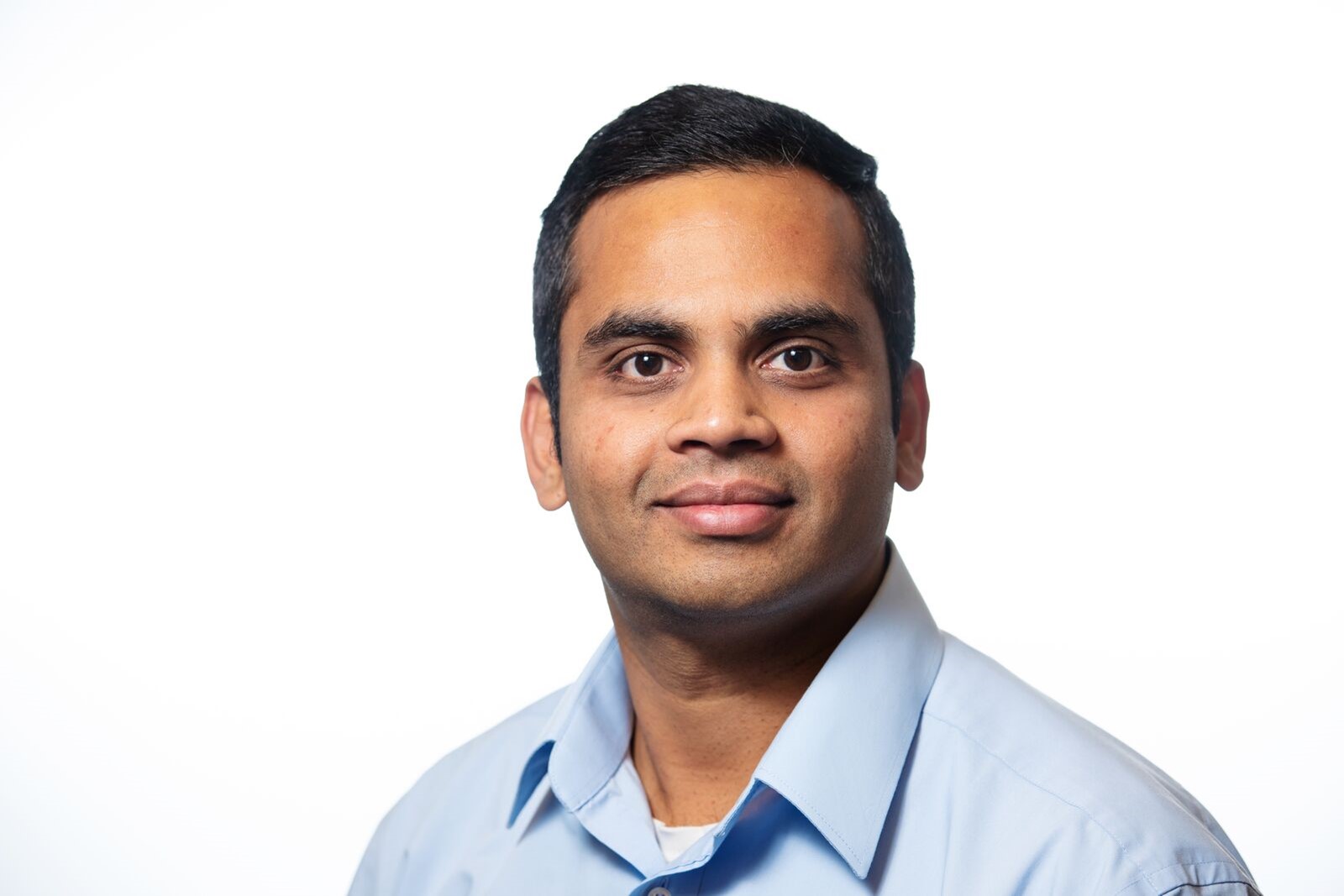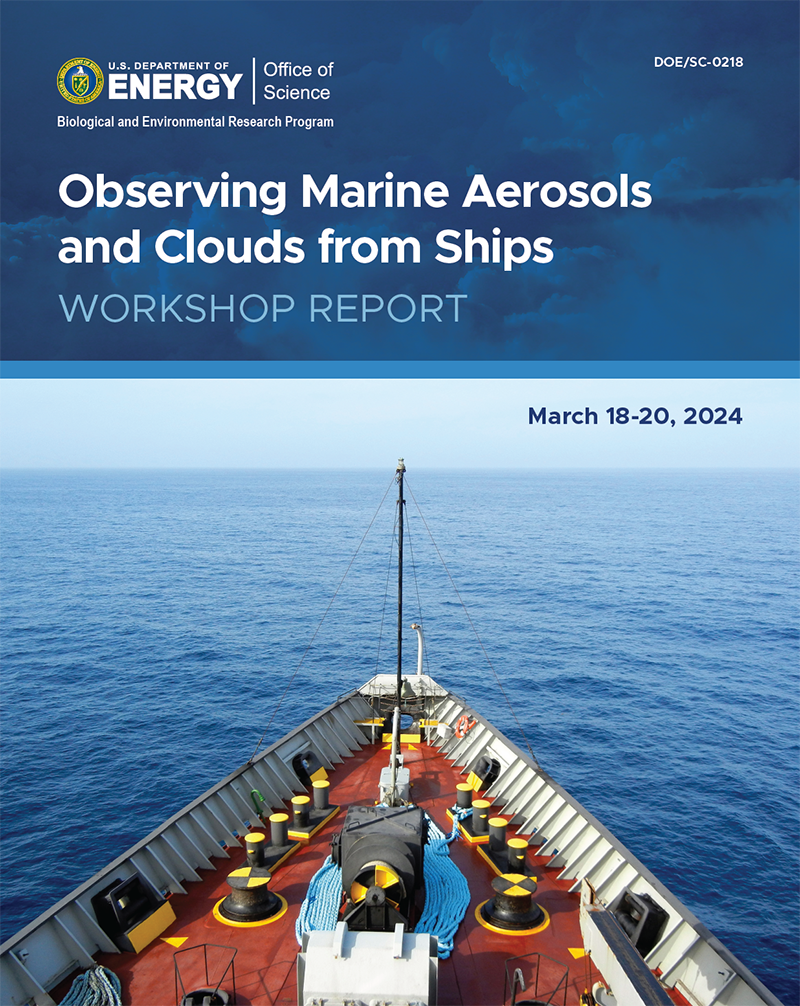
This story is based on an article by Allan Brettman that was published on the Pacific Northwest National Laboratory website on September 26, 2024.
ASR scientist leads project to gather atmospheric, aerosol information
Data-gathering instruments will be positioned on commercial, ocean-going ships in a Department of Energy-funded project expected to improve understanding of marine atmosphere and aerosol-cloud interactions. Using commercial ships as observational platforms could significantly enhance understanding of Earth’s climate system.
Raghavendra Krishnamurthy, a Pacific Northwest National Laboratory (PNNL) earth scientist, is the principal investigator on the project.
BEACONS to Position Equipment on Commercial Ships
The Boundary layer Exploration of Aerosols and Clouds ON Ships (BEACONS) project will deploy autonomous ship-borne systems for routine observation of critical aerosol and cloud properties. BEACONS is expected to demonstrate the feasibility of capturing high-resolution data from commercial ships, offering an unprecedented data set to improve process-level understanding of aerosol-cloud interactions, enhance model accuracy, and validate satellite observations.
A $3 million grant for the three-year project was provided through DOE’s Atmospheric System Research (ASR) program. ASR and the Atmospheric Radiation Measurement (ARM) user facility sponsored a virtual workshop in March 2024 and published a workshop report, which discussed the feasibility and scientific priorities of observing marine aerosols and clouds from commercial ships.
“The growing number of commercial ships actively engaged in their operations presents a unique opportunity, by equipping them with key instruments, we can simultaneously collect valuable data to enhance our understanding of the marine environment.”
– Raghavendra Krishnamurthy
“The team includes experts from PNNL as well as multiple other university partners,” says Krishnamurthy. “PNNL has extensive experience in atmospheric remote sensing, especially studying the marine atmospheric boundary layer and aerosol-cloud interactions from our work within wind energy projects and Atmospheric System Research program science focus areas (e.g., the Integrated Cloud, Land-Surface, and Aerosol system study [ICLASS]). And partnering with key universities, who complement PNNL’s experience, made this a dream team.”
Krishnamurthy expects the instrumentation to be deployed for at least six months, but more likely for a year as a pilot demonstration study. The ships likely will be chosen from a group traveling the Pacific Ocean between ports in Oakland, California, and Hawaii. Data collection on the instrument-equipped ships is expected to begin in 2026.
Science Will Emerge From Voyages

“The growing number of commercial ships actively engaged in their operations presents a unique opportunity, by equipping them with key instruments, we can simultaneously collect valuable data to enhance our understanding of the marine environment,” says Krishnamurthy, noting that other research institutions such as the National Oceanic and Atmospheric Administration and Woods Hole Oceanographic Institution have used commercial ships to carry out experiments.
“We are redefining our approach to data collection. While traditional research vessels focus on specific scientific inquiries, the BEACONS project strategically targets regions of interest—such as the U.S. West Coast—and equips specific commercial ships to measure aerosol and cloud properties along their routes,” Krishnamurthy continues. “Rather than pursuing isolated scientific objectives, we are gathering crucial data on the background state of the atmosphere and aerosol processes. This information is vital for calibrating models and enhancing satellite observations, ultimately advancing our understanding of atmospheric dynamics.”
Research Team
In addition to Krishnamurthy, the BEACONS team includes co-investigators/Institutional Leads Tim Bates (University of Washington), Harindra Joseph Fernando (University of Notre Dame), Lynn Russell (University of California San Diego), and Alison MacDonald (Woods Hole Oceanographic Institution).
Unfunded collaborators include David Turner (NOAA Global Systems Laboratory), Patricia Quinn (NOAA Pacific Marine Energy Laboratory), Derek Coffman (NOAA Pacific Marine Energy Laboratory), Graham Feingold (NOAA Chemical Science Laboratory), William Smith (NASA-Langley Research Center), and the Pasha Group (commercial shipping company).
# # #This work was supported by the U.S. Department of Energy’s Office of Science, through the Biological and Environmental Research program as part of the Atmospheric System Research program.

